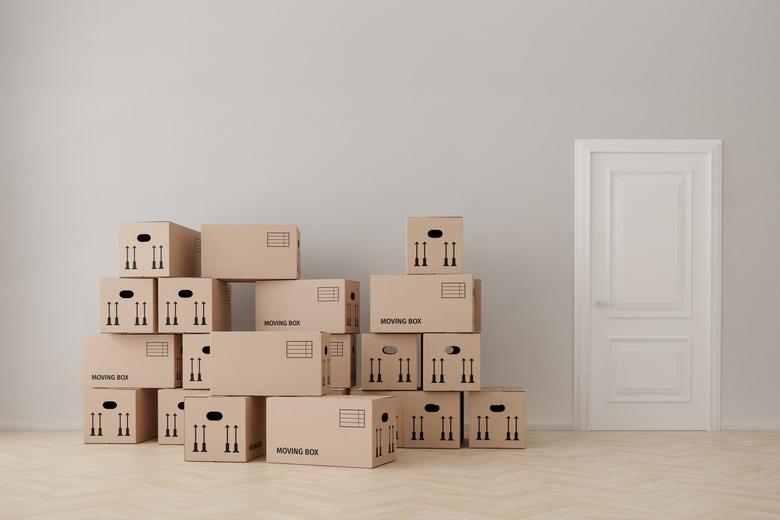How To Store Cardboard Boxes Properly
We may receive a commission on purchases made from links.
It's easy to store cardboard boxes properly, which is good because it's easy to collect too many in the first place. Whether you just moved and brought everything but the kitchen sink from your old place or amassed your collection through excessive online ordering, you'll have to carefully store what you choose to keep. If you don't do it right, problems can develop. If you don't store them at all, you'll be kicking around in a virtual box factory.
Should You Keep Them?
Should You Keep Them?
Storing boxes carelessly can create problems. Boxes can be damaged by high humidity and moisture, which can promote mold. Because insects love cardboard, pests, such as spiders and roaches, can become an issue. Finally, cardboard boxes are flammable, especially if they've dried out in a hot location. If you can't make the effort to store them properly, you may want to consider sending them on their way.
Boxes that are in good condition can be recycled, but it makes more sense to recycle only those that don't show much promise by taking them to a local recycling center or doing curbside recycling. If your boxes are in good condition but you don't want to store them, look into sharing them through online box exchange sites, like Boxgiver or BoxCycle. You can also post notices on community websites, like Nextdoor, or through the Freecycle Network. Just announce that you're setting out boxes for pickup that are free to anyone who wants them. Additionally, check with churches, schools, homeless shelters, and other types of charitable organizations in your area that might need them.
If you're thinking of keeping cardboard boxes to use in the future to store things around the house but are reluctant to dedicate precious storage space to them in the meantime, keep in mind that you can always use plastic, wicker, or fabric bins and cubbies instead when the time comes. All sorts of attractive designs are on the market in a wide variety of sizes, colors, and prices. Some types are even collapsible for storage when not in use.
How to Store Your Boxes
1. Choose Your Location
To decrease the likelihood of mold, avoid damp basements and other locations that become humid. If you choose the basement, make sure they're off the floor to prevent floodwater damage. Don't store them where you have (or suspect that you could have) an insect problem. Also, because cardboard is so flammable, keep them out of hot attics and away from other flammable materials.
2. Prepare the Boxes
Make sure all packing materials, paper, bits of tape, and food crumbs that could attract insects have been removed. To make sure you save as much space as possible, break down the boxes completely, unfolding and flattening them.
3. Group According to Size
Separate the boxes by size before bundling them together. Using a marker, note the size on an end of the box that will show when they're bundled together. If you have a lot of boxes, this will help you quickly locate sizes when you need them.
4. Tie Them Together
Bundle them together and then use strong string to tie them securely.
5. Put Them in Place
Store the bundled boxes upright where they won't fall over or store them lying flat on a raised surface off the floor.
6. Keep an Eye on Them
From time to time, take a look to make sure no problems have developed, such as insect infestations, mold, or damage from basement water or moisture.
